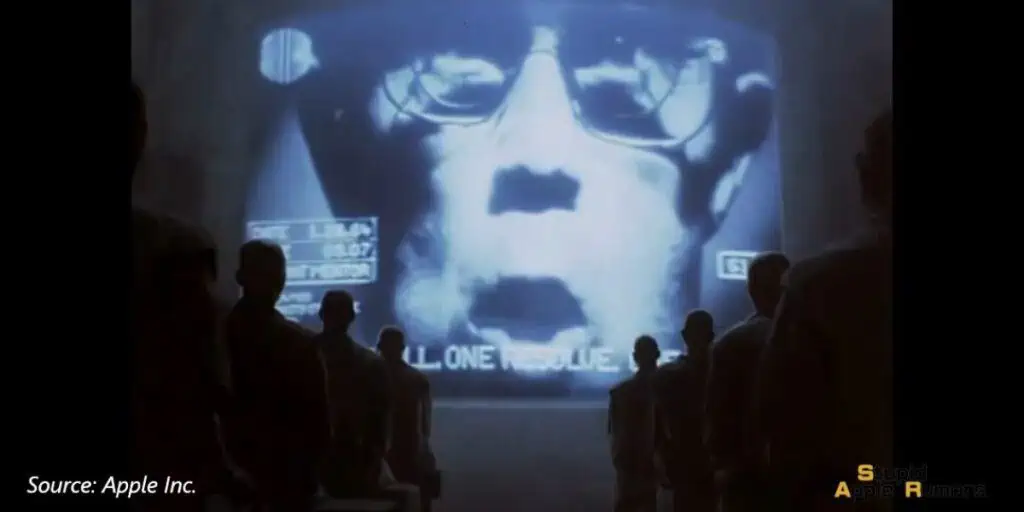The first Apple Macintosh commercial is one such instance, etching its place in history as the herald of a technological revolution.
A 60-second masterpiece aired during the 1984 Super Bowl, it not only introduced the world to Apple’s groundbreaking personal computer but also set a new standard for advertising creativity and impact.
Also check out: How Much Did the First Macintosh Cost?
Why is the First Macintosh Commercial Considered the Most Iconic of All Time?
Table of Contents
The year 1984 was marked by technological optimism and anticipation.
The personal computer industry was still in its infancy, and Apple, with its trailblazing Macintosh, sought to redefine the relationship between humans and machines.
However, the landscape was dominated by IBM, representing the establishment and conformity. Apple needed a bold statement to differentiate itself and signal a departure from the status quo.
Who Directed the First Macintosh Commercial?

At the helm of this visionary endeavor was acclaimed filmmaker Ridley Scott, renowned for his cinematic prowess in movies like “Blade Runner” and “Alien.”
Hired by Apple’s co-founder Steve Jobs, Scott brought a cinematic flair to the commercial that transcended traditional advertising norms.
The result was a visually stunning and narratively gripping piece that would leave an indelible mark on popular culture.
What Did Apple’s First Macintosh Commercial Signify?

The commercial opens with a dystopian scene reminiscent of George Orwell’s “1984.”
A legion of people, expressionless and clad in identical attire, marches in unison towards an imposing screen where a Big Brother figure preaches conformity.
This stark tableau is a deliberate nod to Orwell’s cautionary tale about the perils of totalitarianism and mindless obedience.
Amidst the gray monotony, a sledgehammer-wielding heroine, played by athlete and actress Anya Major, bursts onto the scene.
With determination in her eyes, she hurls the hammer towards the screen, shattering it into a thousand pieces.
This symbolic act represents the liberation from the shackles of conformity and the birth of a new era, embodied by the Apple Macintosh.
The brilliance of the commercial lies not just in its visual spectacle but in its narrative prowess.
In a mere 60 seconds, it manages to convey a powerful story of rebellion, liberation, and the triumph of individualism over the collective.
The use of symbolism and allegory elevates it beyond a mere product advertisement, transforming it into a cultural manifesto.
What Made the 1984 Macintosh Commercial Stand Out?

In a period dominated by verbose and feature-centric advertising, Apple’s commercial stands out for its minimalistic approach.
The absence of explicit product details or technical specifications is a deliberate choice. Instead, the focus is on the broader narrative, inviting viewers to engage on an emotional level.
This departure from conventional marketing strategies paved the way for a new era of consumer engagement.
Decades after its debut, the first Apple Macintosh commercial continues to be hailed as a touchstone for advertising creativity.
It set a precedent for brands to view advertising not merely as a means of product promotion but as a platform for storytelling and cultural commentary.
The notion that an advertisement could transcend its commercial intent and become a cultural phenomenon was a paradigm shift that resonates in contemporary advertising strategies.
Conclusion
The first Apple Macintosh commercial remains a benchmark in the history of advertising, a timeless example of how creativity and storytelling can elevate a brand beyond its product.
Its enduring legacy lies not just in its historical significance but in its ability to resonate with audiences across generations.
As we reflect on the ‘1984’ commercial, we are reminded that innovation, both in technology and advertising, is often born from the courage to challenge the norms and envision a different future.
In the ever-evolving landscape of advertising, the ‘1984’ commercial stands as a testament to the enduring power of storytelling, visual artistry, and the audacity to defy expectations.
Also check out:

